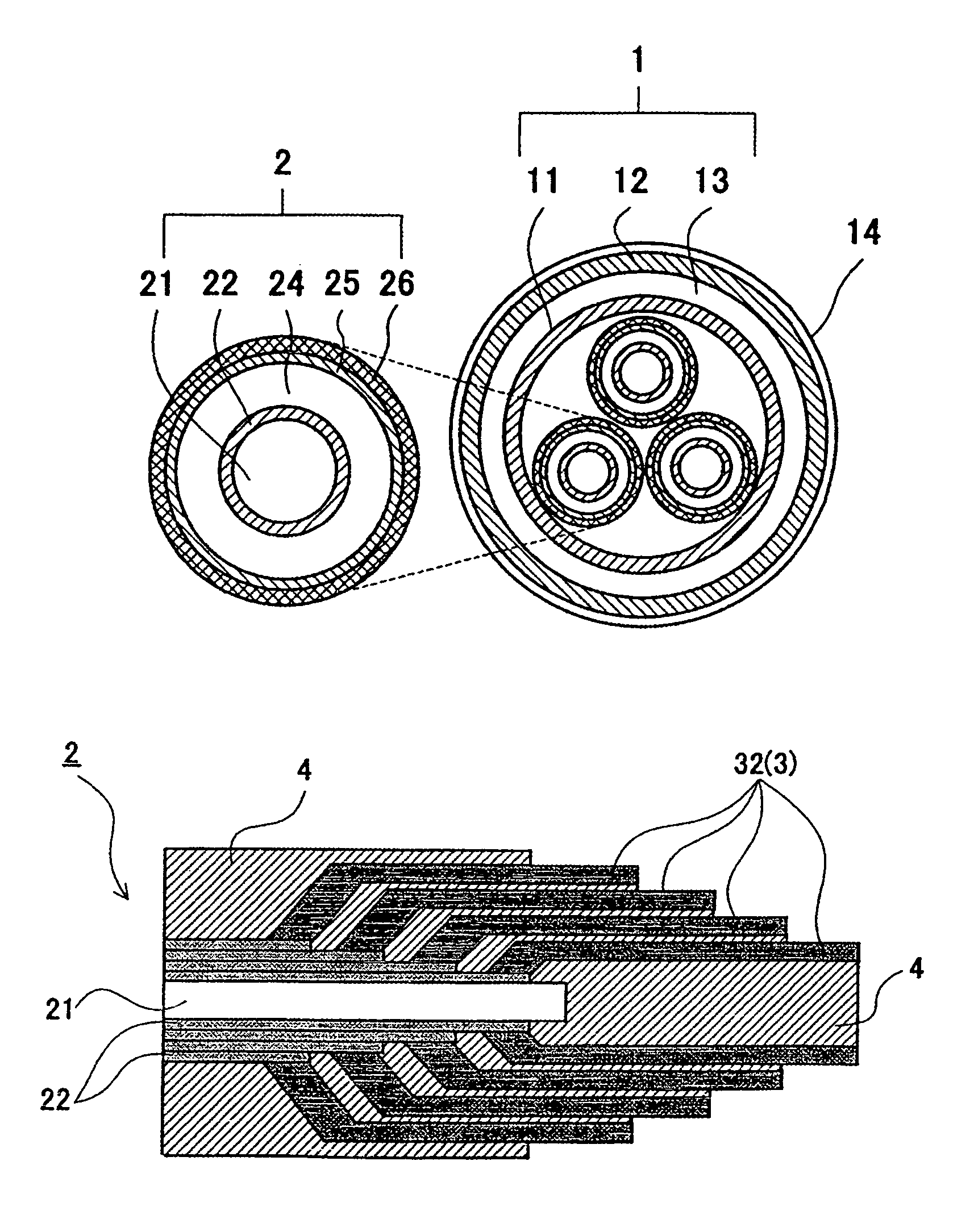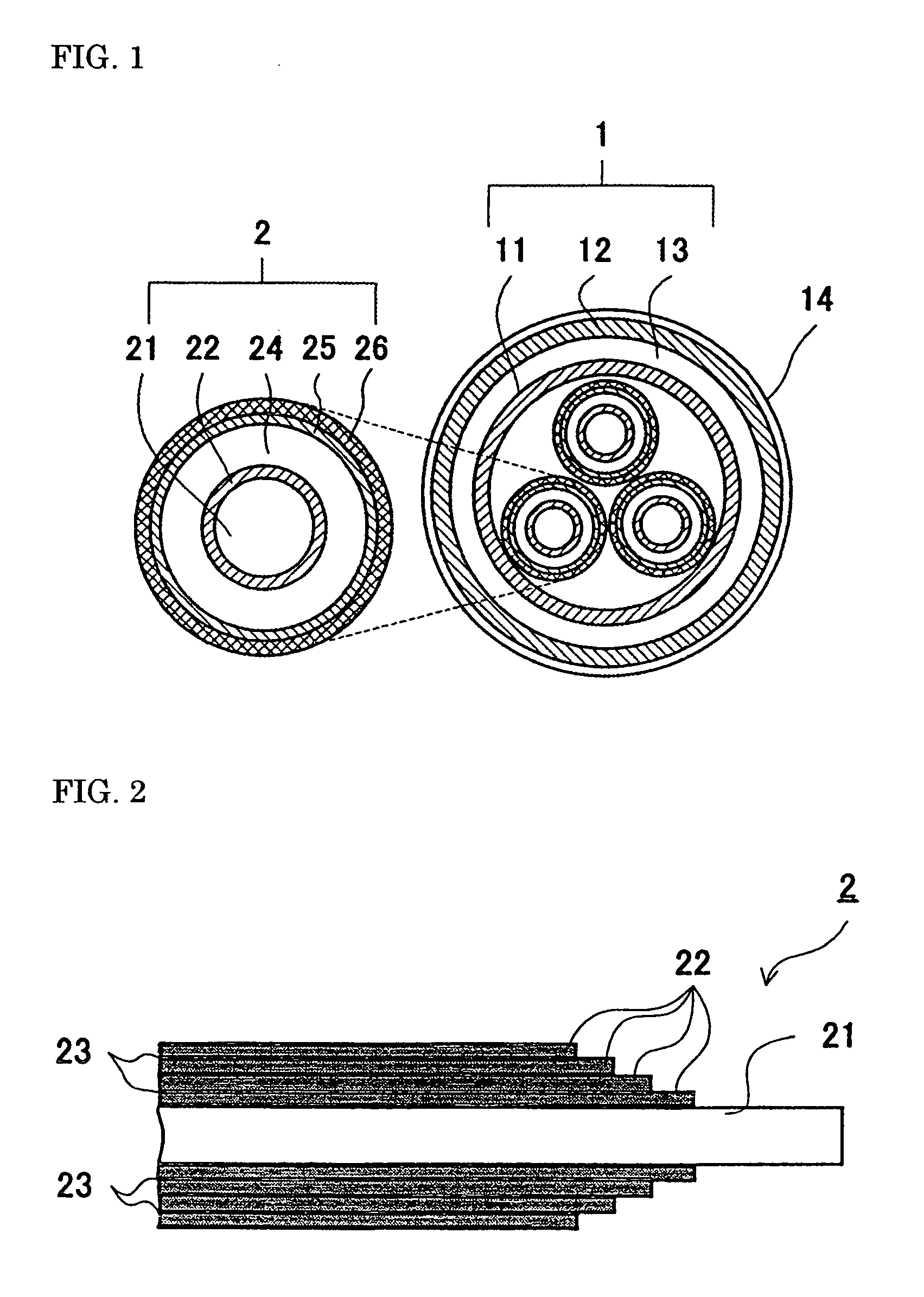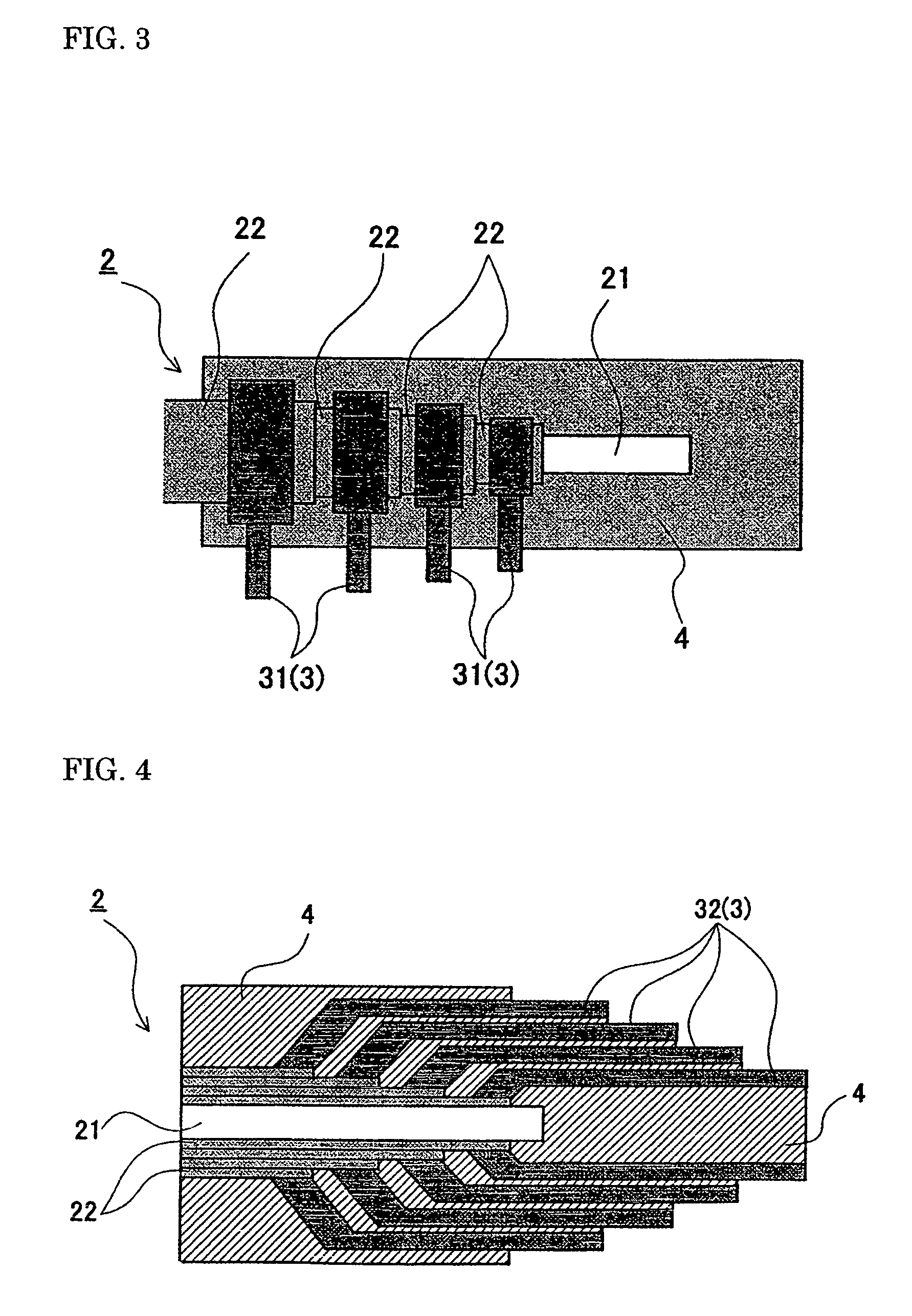Terminal structure of direct electric current multilayer structure superconducting cable and DC superconducting cable line
- Summary
- Abstract
- Description
- Claims
- Application Information
AI Technical Summary
Benefits of technology
Problems solved by technology
Method used
Image
Examples
first embodiment
[0036]In the first embodiment shown in FIG. 3, a plurality of outgoing conductors 31 (3) are formed, and an end of each outgoing conductor 31 is connected individually with the exposed end of a corresponding superconducting layer 22. Then, the other end portion of each outgoing conductor is extended from the exposed portion of the respective superconducting layers 22 at a right angle relative to an axial direction of the superconducting cable. In this case, the respective outgoing conductors 31 are extended in parallel as shown in FIG. 3.
second embodiment
[0037]The outgoing conductors 32 (3) of the second embodiment shown in FIG. 4 are composed of a plurality of outgoing conductors 32 each having a tubular shape (or a tubular shape divided in half circle) of a different dimension. An end of the outgoing conductors 32 are connected with the exposed end portion of the corresponding superconducting layers 22 in a manner such that the tubular bodies are disposed concentrically one over the other. Then, the other end of the outgoing conductors 32 are extended along the axial direction of the cable. The outgoing conductors 32 are connected with the exposed portion of the superconducting layers 22 such that an inner superconducting layer is connected with an outgoing conductor having a smaller diameter step by step in the order of a smaller one to a larger one.
[0038]For extending the outgoing conductors along the axial direction of the superconducting cable, an end of the outgoing conductor made of wires instead of a tubular body may be ind...
PUM
 Login to View More
Login to View More Abstract
Description
Claims
Application Information
 Login to View More
Login to View More - R&D
- Intellectual Property
- Life Sciences
- Materials
- Tech Scout
- Unparalleled Data Quality
- Higher Quality Content
- 60% Fewer Hallucinations
Browse by: Latest US Patents, China's latest patents, Technical Efficacy Thesaurus, Application Domain, Technology Topic, Popular Technical Reports.
© 2025 PatSnap. All rights reserved.Legal|Privacy policy|Modern Slavery Act Transparency Statement|Sitemap|About US| Contact US: help@patsnap.com



